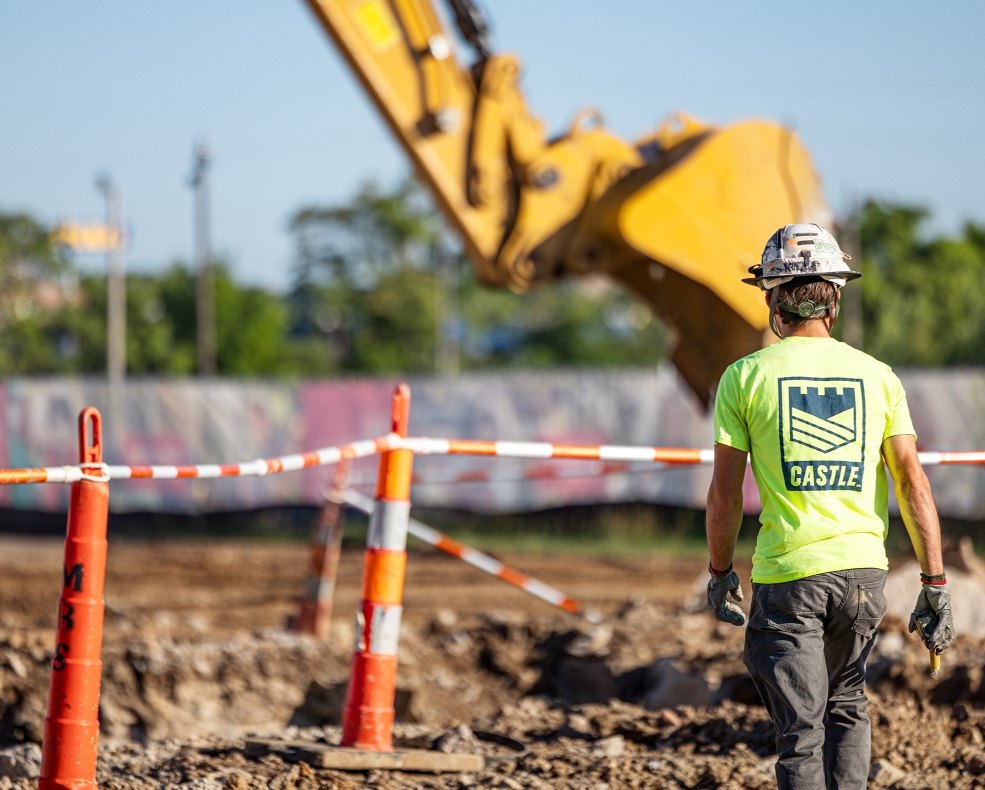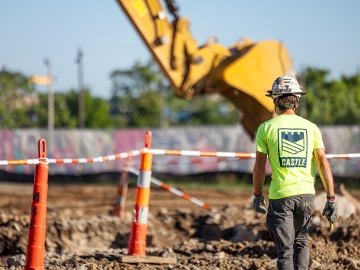How Owners Benefit from Alternative Project Delivery
The construction industry has been moving toward more collaborative delivery methods for many years. Hybrids and new approaches are tested by firms all the time. Why?


The construction industry has been moving toward more collaborative delivery methods for many years. Hybrids and new approaches are tested by firms all the time. Why? As an industry, we are looking for better ways to design and construct versus traditional design-bid-build delivery. Earlier, more collaborative approaches help close the gap in information handoff while encouraging team members to develop a mindset for creativity, innovation and problem-solving.
Civil construction may be perceived as a straightforward activity that can be bought without much thought. That’s because the most common way owners experience it is through a traditional design-bid-build process. This is not ideal, as the project site carries some of the greatest risk to owners – and recognizing and understanding that risk as early as possible is not always feasible with traditional design-bid-build.
In civil construction, there is plenty of room for improvement, creativity and enhancing value through alternative project delivery. At Castle, we decided to accept that challenge and bring design phase services to an entirely new level, providing more value to owners. To do this, we paired in-house civil designers with seasoned construction professionals and our subsurface utility mapping team. This provides owners with a cohesive team to help mitigate site risk — all under one roof.
Benefits of Civil Design-Build
Zero loss of data. Using civil design-build, clients work with one entity that controls all the civil data from collection to construction. The result? Streamlined and consistent interpretation of data across multiple companies and platforms. This results in a smoother overall process, fewer change orders and no finger-pointing.
Find the unknowns. One of the common issues encountered regularly with design-bid-build delivery is uninformed design that does not accurately identify all the conflicts on site. As a result, a contractor may begin work in the field only to discover the design is not constructable, often because of unknown utility conflicts. This delays the project for redesign at a significant cost to the owner. We knew there was a better way to prepare project sites, so in 2012 the Castle team implemented subsurface utility mapping. Our unique mapping process utilizes record research, field reconnaissance and locating equipment to identify, locate and map existing utilities. This information is placed into a 2D or 3D deliverable that informs design from the start. Our civil designers can then incorporate utilities, reroute them, or design around them for a more efficient design that achieves the owner’s goals and reduces costly delays later in the project.
Risks and cost implications are discovered early. Understanding the project site and its associated risks means the civil team can provide an owner with realistic expectations and cost certainty to make decisions accordingly. If cost implications are understood early, the owner can decide whether to purchase a property, and the project team can plan for the cost in early budgets. This includes knowledge of unknowns and utilities, stormwater or flooding issues, topography, constructability challenges, jurisdictional requirements and material management.
Smoother permitting. It is essential to coordinate with Authorities Having Jurisdiction (AHJs) throughout the design process. When they know the project and its evolution, the approval process is expedited. The AHJs are then familiar with the civil team and understand the decisions made and why. In return, the civil team knows the design is compliant. If a design is approved, but a conflict is not discovered until construction begins, redesign may cause delays until it is approved. This is avoidable from the outset.
When should you consider civil design-build?
When you are evaluating property purchase. The best time to engage your civil design-build team is at the beginning, when you are evaluating potential property to purchase for a new project. Having your civil design-build team on board early to perform field reconnaissance and research, evaluate the site, and develop preliminary design and cost concepts can help to inform your decision and establish a budget. The goal is to mitigate your risk early, thus setting the project up for smooth execution.
When you need to move fast and explore concepts quickly. Speed to market is essential so a business can open the doors to its new facility and begin generating revenue as quickly as possible. The civil design-build team can help owners through an iterative process providing design concepts that are constructable so owners can make quick decisions. This allows the team to break ground on the civil scope while building design is still progressing, instead of waiting for the entire design to be 100 percent complete.

When you need a prime civil contractor. Design-build may be a perfect alternative for projects not involving major vertical building construction, but it’s often not even considered. Having a single point of contact to handle the project makes life easier for facilities groups managing large campuses or multiple properties. Owners with ongoing facilities projects, parking lots, utility reroutes and more can find great value in design-build to bring speed, creativity and efficiency to these projects.
When you have a tight budget. Engaging civil design-build early can save significant costs associated with hidden site risks. Efficient design can reduce utility relocations and use the site grades to the project’s advantage. This eliminates added costs that can be reallocated to more important parts of your project, like the building.
A project can be delivered in many ways, but it is necessary to evaluate alternative methods for the first phase of a project before it is too late to have a valuable impact. If you haven’t implemented design-build yet, consider trying it with a smaller project to grow your comfort level and knowledge. The risk mitigation and cost certainty will make it worth your while.




